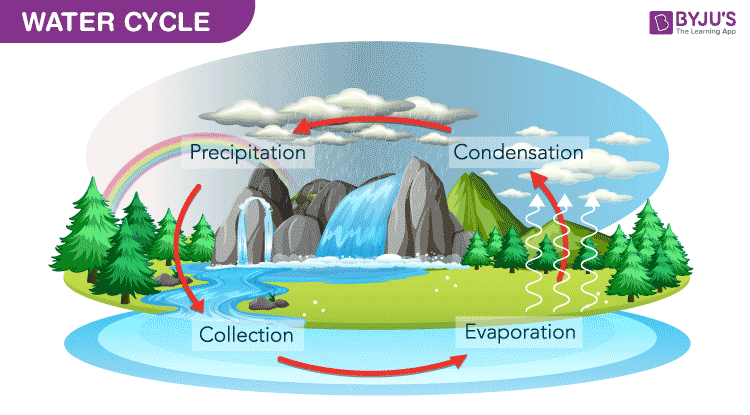Water is all around us in a variety of forms. Clean water is essential to life and contributes to improved health, education and economic productivity.
Water is also available underground as groundwater and in lakes and reservoirs. Some of these are easily accessible, while others require significant work to reach.
Water Resources
Water resources are natural sources of water that are used or potentially usable by humans for agricultural, industrial, household, recreational and environmental activities. While there is a great deal of water on the Earth, only about 2.5% is fresh water. Over two thirds of the world’s fresh water is frozen in glaciers and polar ice caps, while the rest is underground or in groundwater. The world’s supply of clean, fresh water is limited and is currently decreasing due to climate change and human activity.
Biological water sources like lakes and rivers are the primary sources of drinking, cooking, washing and commercial water for homes, small towns and cities. Surface water is also an important source for municipal, industrial and agricultural use. The availability of ground water and collected rainwater is less certain, but they can be used on a local basis. Commercial water is supplied to hotels, restaurants, offices and businesses either through public-supplied water sources such as a county water department or from self-supplied private wells.
The availability of all water depends on the hydrological or water cycle. Water molecules evaporate into the atmosphere as clouds, then fall back to Earth as precipitation (rain or snow). Some of this water is absorbed by plants through transpiration and aquifers through permeable rock, clay or sand, becoming groundwater. The remainder of the water flows into a river or other body of water. The return flow (such as water from irrigated farmland) that is not consumed in evaporation or by plant transpiration returns to the original body of water, and the cycle begins again.
Surface Water
A body of water that is above ground, including brooks, rivers, lakes and reservoirs. This includes the ocean — although it is saltwater — because it participates in the same hydrologic cycle as surface water. It is the source of our drinking water and provides habitat for many species.
Surface water is naturally replenished by precipitation and lost through discharge to the ocean, evaporation and groundwater recharge. The proportion of loss depends on the storage capacity of lakes and wetlands, the permeability of soil beneath these storage bodies and local evaporation rates.
When precipitation falls on land, it may soak into the ground, becoming groundwater or it may run off, seeping into extensive layers of porous rock and soil called aquifers. Groundwater supplies more than 30 percent of the world’s readily available freshwater.
All living things must have access to freshwater if they are to survive and thrive. Despite being a very scarce resource, freshwater is not only vital for human life, but also supports our ecosystems and the economies of our communities. Most of Earth’s water is locked in ice, but the remaining 2.5 percent is freshwater found in surface water sources such as rivers and lakes. These are the primary freshwater sources for communities, but are vulnerable to contamination from agricultural and lawn pesticides, motor oil, road deicing chemicals and effluent from malfunctioning septic systems.
Ground Water
When most people think of water, they imagine flowing streams and crystal clear lakes. However, almost all fresh water (that is not frozen in ice caps and glaciers) is found underground as ground water or soil moisture.
When rain falls on the ground, some of it flows into creeks and rivers, and some goes into sewer systems or into groundwater supply wells. This ground water enters and fills the spaces between loose dirt particles or in cracks and crevices in rocks (called pore space). It moves slowly down through the unsaturated zone to the saturated zone. The movement of groundwater depends on the permeability and pressure of the rock materials, which can vary widely.
It may move at the rate of a few feet per day or as slow as a foot or less per century. As it travels underground, it is filtered naturally. This filtering process can remove germs and other chemicals, depending on the geology of the area. The resulting ground water may be suitable for drinking or irrigation.
There is an immense amount of ground water in aquifers under the earth’s surface. In fact, there is over a thousand times more water in these aquifers than there is in all of the world’s rivers and lakes combined. However, only a small fraction of this water is readily available for human use.
Reservoirs
Reservoirs are manmade lakes built by damming rivers. The water stored in reservoirs can be used for irrigation, hydroelectric power and domestic and industrial purposes. Reservoirs are also effective constructions for controlling unexpected floods.
While a reservoir is essentially an impounded lake, the water contained in it is usually different from that of a flowing river, both in temperature and chemical composition. This difference is due to the fact that the reservoir is largely filled by runoff from upstream areas, containing sediments and nutrients. This nutrient input also alters the natural water cycle by accelerating eutrophication and decreasing habitat availability for aquatic plants.
Manmade reservoirs are sometimes stocked with fish to develop sport fishing and other recreational activities, and they are often surrounded by a fence to protect them from predators. These practices create a food web that is distinctly different from that in the adjacent natural river system and may have unforeseen consequences for wildlife populations and biodiversity.
Many animal diseases are maintained in wild animal populations which serve as reservoirs of infection for a target population of humans, domestic animals or livestock. Identification of these reservoirs is difficult because most of these diseases infect multiple hosts (e.g., foot-and-mouth disease virus in unvaccinated buffalo herds in parts of Africa). Identification need not be a management priority if ring-fencing can reduce transmission within a target population to very low levels.










